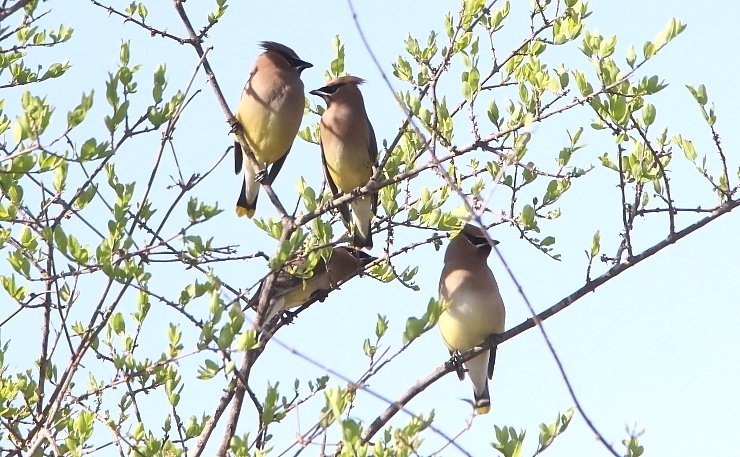
Here it is, the end of April, and things are slowing down in the south. As I mention each year at this time, the beginning of the birding year, up north, is the end of Mexico’s peak birding season. Only a month ago, a good morning spent gazing at my garden could yield 20 species; but now, suddenly, my goal is 10. (And in another month, when the rainy season makes my birdbath less attractive, that number will drop to around 5 species.)
So how did the winter of 2020-2021 shape up down here? It was, obviously, a most unusual season. Not only did the pandemic eliminate the possibility of traveling to see different biozones, it also temporarily removed the most heavily-trafficked sites from my list of favorites. And a severe drought here caused our largest lake to dry up completely, with smaller ponds and streams doing so as well, one by one.
Considering these challenges, this winter was a surprisingly good one for birding. Of course, I saw a few lifers that I was bound to see eventually, as one does every year. But I also experienced, along with other birding friends across the country, some unusual and intriguing events.
As I have mentioned in previous posts, this winter’s biggest story was a tremendous abundance of Cedar Waxwings throughout central Mexico. I have never heard the word “irruption” used in Mexico, but no other word really does this phenomenon justice. A look at eBird’s species map for this species over the past winter, compared to any other recent winters, shows an astonishing contrast. I began to see Waxwings (which I had only seen once before in central Mexico, in 2018) on February 1st, and have seen them at least once every week since then, in numbers of up to 150.
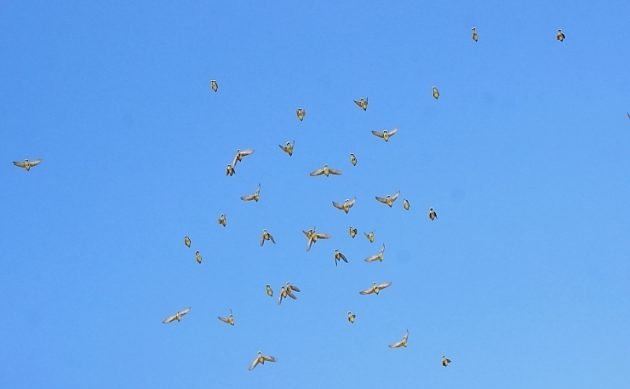
There were about 40 in this group.
I also saw a most unusual abundance of Lazuli Buntings this winter. I registered this species almost as many times in one winter as in all my previous years of birding. And I saw Lazulis five times in my garden, although I had never seen any there in other years. Birding friends in eastern Mexico reported some of the first sightings ever for their states.
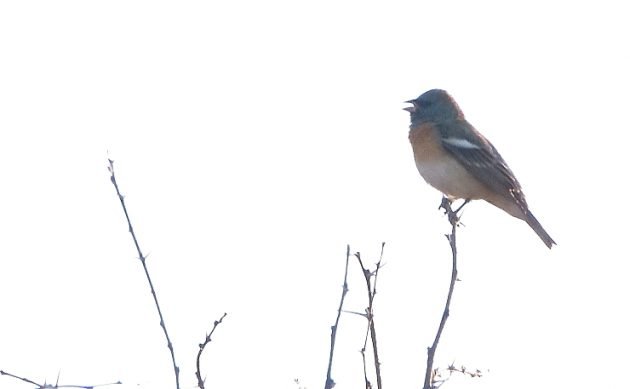
This particular male stayed long enough in the spring to want to break out in song, which is something they don’t usually do on their wintering grounds.
Three other passerines followed the same pattern of showing up as much in this one winter as in all previous years combined: Indigo Buntings, Lincoln’s Sparrows, and Grasshopper Sparrows. This year, I reported Indigo Buntings in my garden 16 times, compared to only 2 previous sightings ever there. Before this winter, I had only seen Lincoln’s Sparrows there 5 times. But this winter they were a constant presence, sometimes with several at the same time. Boy, those Lincolns do love a birdbath!
Warbling Vireos have never been more than casual visitors to my garden before this year, and never more than one at a time. However, since January they have been a constant presence. Since they are constantly coming and going, I really have no idea how many I am seeing on a given day. But I have seen three at a time, so that would be the minimum number. And unlike our now-departed winter visitors, I am watching a Warbling Vireo as I write this. They are, theoretically, a permanent resident in central Mexico, although I have only seen them here during the winter season. We’ll see…
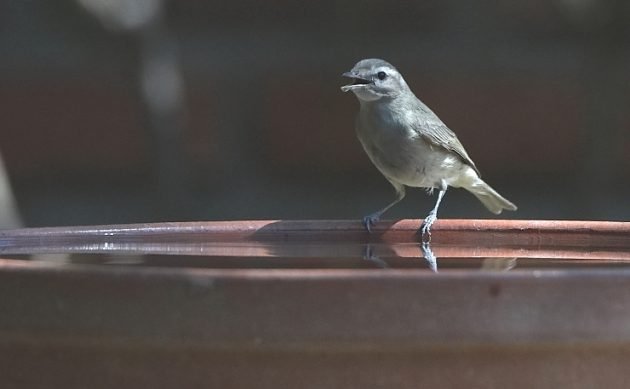
Warbling Vireos have an odd open-billed way of drinking water.
At least one Virginia’s Warbler, a Lucy’s Warbler, an Orange-billed Nightingale-Thrush, and several Cedar Waxwings were entirely new garden visitors. (As were a couple of Eurasian Collared Doves, but you can’t win them all.) Summer Tanagers, Rufous-backed Robins and Blue Mockingbirds have all decided to visit much more often than other years.
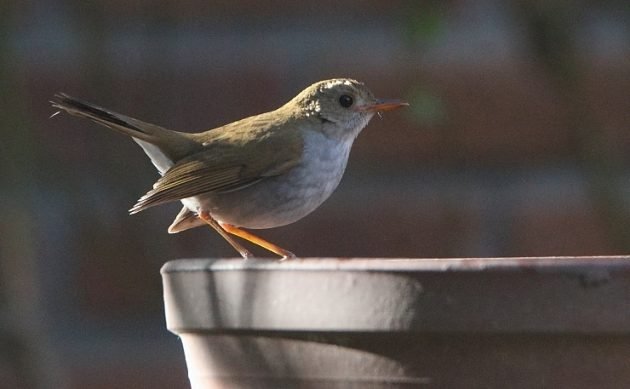
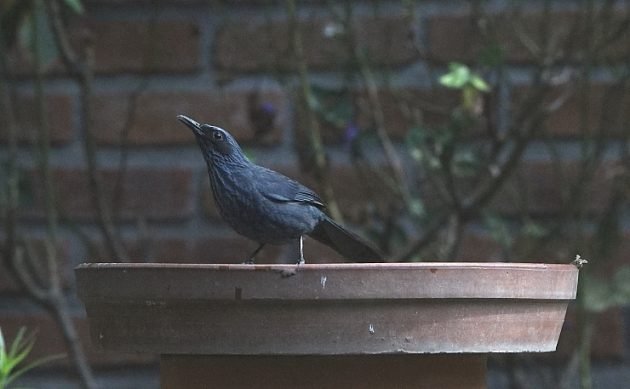
The major downside for the 20/21 winter in the Morelia area is obvious: All birds that depend on bodies of water, mudflats, or marshes were difficult or impossible to see. Any chance of finding wetland surprises disappeared, and even some of the normal species are not yet on my list. Others have turned up, but only in tiny numbers, in surprising places. (I was able to see 2 species of Grebes and 6 Egrets/Herons at a small reservoir on Monday.)
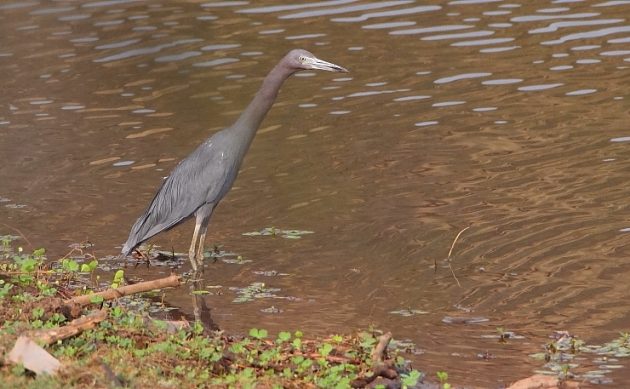
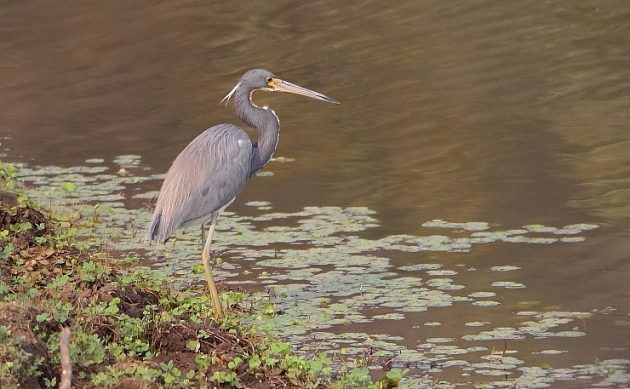
Same basic spot, different herons.
This has led to another sad reality in the Michoacán highlands: we are currently experiencing our worst fire season in years here. The following photos are from a week ago, on my way back from my weekly outing. (The fire was burning on the other side of the highway on my way out.)
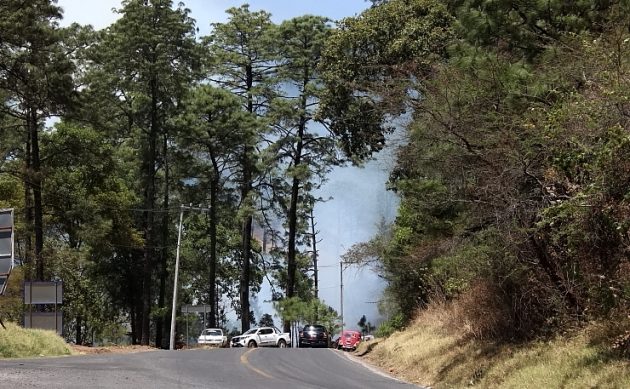
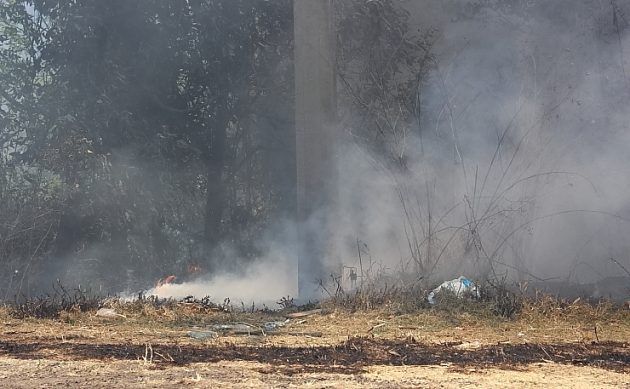
I am counting the days until the presumed start of our rainy season.
But even in complicated times, there may always be a few lifers. On March 1st, I saw my first Pyrrhuloxia and Lucy’s Warbler. I saw my first Eastern Phoebe for the state of Michoacán (a “Michoalifer”) in January, and my first endemic Pileated Flycatcher for the state in January (with a second one just last week).
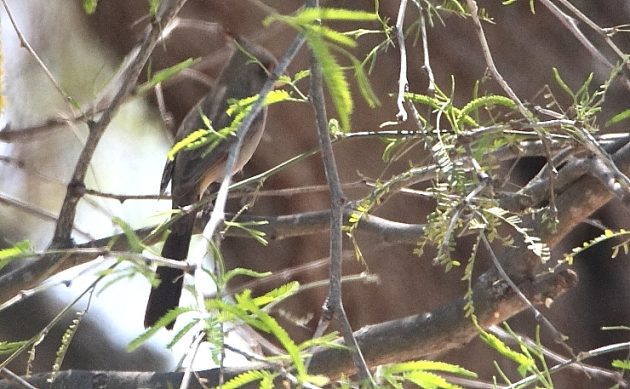
I didn’t confirm it until I got home, but there’s a Pyrrhuloxia in there.

That first Lucy’s Warbler
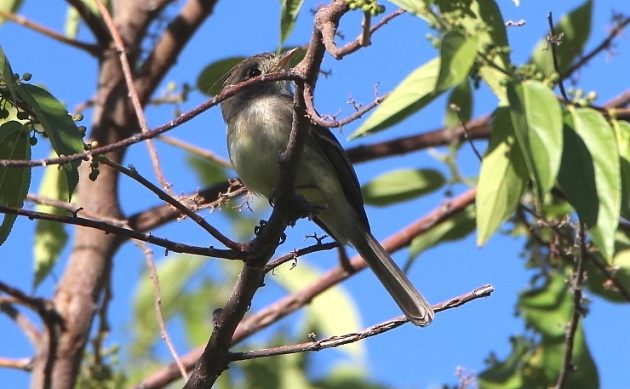
Nothing says Pileated like that punk crest.
This winter’s birding has, in fact, been rather comforting. With so many things in the past year become flat-out impossible, it is good to know that our birding, like the birds it involves, has an admirable ability to adapt.
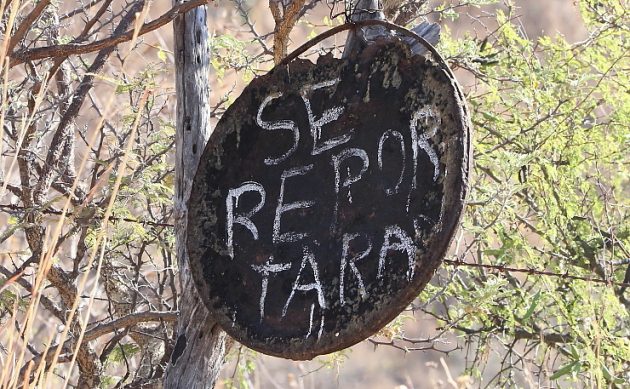
I saw this oh-so-handmade sign last week. It says “You will be reported”. Let that be a warning for birds everywhere.











Leave a Comment